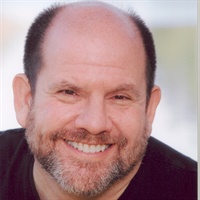CC16 Workshop 02 - Uncovering Deception In Couple Therapy - Stan Tatkin, PsyD
- Average Rating:
- Not yet rated
- Topic Areas:
- Couples Therapy | Workshops | Deception | Psychobiological Approach to Couples Therapy (PACT)
- Categories:
- Couples Conference | Couples Conference 2016 | Pioneers in Couples and Family Therapy
- Faculty:
- Stan Tatkin, PsyD, MFT
- Duration:
- 02:10:07
- Format:
- Audio Only
- Original Program Date:
- May 13, 2016
- License:
- Never Expires.
Description
Description: This session explores deception in couples therapy through a psychobiological lens, integrating attachment, arousal regulation, and neuroscience. Tatkin highlights the limits of conscious awareness in relational conflict and the role of implicit memory and nonverbal cues in uncovering hidden agendas. Using tools like digital video analysis, cross-questioning, and presumptive statements, therapists are guided to promote secure functioning and foster repair following betrayal.
Syllabus Description: The psychobiologically oriented couple therapist understands that the intersubjective, phenomenological process operating in primary attachment relationships relies heavily on fast acting implicit memory systems. Because of this phenomenon partners in a relationship rarely know what they are doing or why, and so they confabulate meaning in the absence of real understanding. Additionally, partners in couple therapy maintain hidden agendas and use deception in order to protect themselves from loss. Therefore, it is up to the couple therapist to find out who partners are, what they really want, and what they are up to in the first or second session. In this workshop we will learn to accept deception in couple therapy is a part of normal human behavior while utilizing specialized techniques to help partners clarify themselves and their agendas in an effort to move them toward secure functioning.
Educational Objectives:
- To be able to list at least four common behavioral markers of deception.
- To be able to apply at least three interventions for bringing deception out into the open.
- To be able to identify somatic markers that conflict with partner narratives.
*Sessions may be edited for content and to preserve confidentiality*
Credits
Handouts
| STAN TATKIN - CC16-WS02 (0.91 MB) | 8 Pages | Download |
| Ericksonian Learning Snapshot (252.3 KB) | 2 Pages | Available after Purchase |
Faculty

Stan Tatkin, PsyD, MFT Related Seminars and Products
Stan Tatkin, PsyD, MFT, is a clinician, researcher, teacher, and developer of A Psychobiological Approach to Couple Therapy (PACT®). He has a clinical practice in Calabasas, CA, where he has specialized for the last 15 years in working with couples and individuals who wish to be in relationships. He and his wife, Tracey Boldemann-Tatkin, developed the PACT Institute for the purpose of training other psychotherapists to use this method in their clinical practice.


